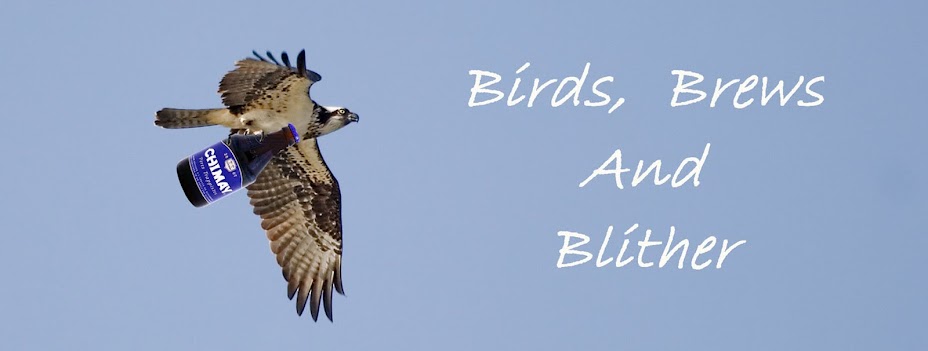So if you read my last post, you watched Natalie and I brew beer. Its the real deal on a small scale. Major breweries, micro-breweries, and home brewers all do this. We are just doing it one gallon at a time.
As promised, I'm checking in.
During the last 14 days, the sugars have been eaten by the yeasts who, in turn, burp carbon dioxide and pee alcohol. By the 14th day, the fermentable sugars, as they are officially known, are gone. (You might think of it as the annoying co-worker who shows up and eats all of the good stuff at the Christmas Party.)
The carbon dioxide, by the way, has escaped (remember the hose with the water bowl?). One could theoretically drink the beer at this point, but it would be flat and the tastes will not have matured.
Let's bring in step 2.
Knowing flat beer sucks, there has to be a way to carbonate it. But first, one has to get it out of the fermenter. ( I will at this point apologize for the crappy photos. I left my main camera at home and was taking quick pics with my iPhone (scratched lens and all).)
Notice the layers of sludge at both the top and bottom.
The top is no big deal. It is dried-up grunge from the early days in the carboy. When the yeasts were partyin' hard (days 1-3), this region was all foam. After the party had died back (day 4 and beyond) and the rowdies hauled off to jail, the more laid party-yeasts continued but at a slower pace.
The bottom? Now that can be trouble. Called "trub" (pronounced by some as "troob"), it is an icky mix of proteins, fats and inactive yeasts, bloated yeasts (I have no idea what that means), and dead yeasts (I understand that one!). The trick now is to separate the beer from the trub.
Using the physics of a siphon, the beer is sucked out of the fermenter. Care needs to be taken so as to not disturb the trub. A simple vessel-to-vessel transfer is all that is needed. (It is worth noting that many brewers keep the trub and use it again for the next batch. We're not doing that.)
But we still haven't solved the carbon dioxide issue. Where does it come from? We could keg the beer and simply force the CO2 into the booze. Okay, fine. But we are not doing that.
Here is a clue. Not all the yeasts are in the trub. Some are still in the beer and they're alllliiiiiiive. Like drunken college students on a Friday night, they are wandering. While freshman want cheap alcohol, yeasts want more sugar. So the brewers trick? Add more sugar.
The trick is to add a bit of sugar, not a ton. Once the beer is in the second pot, honey or maple syrup are added. We're talking tablespoons to the gallon here. Stir the pot and you are ready to bottle.
Again using a siphon, and a bottle wand, beer (with the new sugar) is added to each bottle. The beauty here is that each one can be filled easily, cleanly, and with the same amount. It turns out the gap at the top between the beer and cap (called ullage) is very important. Too big or too small and the carbonation of the beer can go weird.
Once the beer is in the bottle, capping commences. Using the red "jaws of life", each cap is seated on the bottle and clamped. Easy stuff.
With that, you're done. This entire process is called bottle conditioning.
Speed is off the essence here. The whole process takes less than 20 minutes if two people are working in tandem and efficiently. Remember, sterility is key. The beer is sterile. The caps. The bottles. The siphon. All equipment (including hands) that touch, or might touch, the beer must be bacteria-free. Like cooties in an open cut, bacteria lead to infection. That is a beer term. If you take beer from the fermenter and leave it in the pot on the counter, in the open air for a day and then bottle, you're beer might go sour. (Of course, some brewers do just that. But that is perhaps a story of another day...)
A neat twist here, by the way. When the sugars are added to the pot, they are officially called priming sugar. There are lots of ways to do this, but this recipe has a story.....
This book lays out the recipe we followed. Called "Prohibition Ale", a suggestion was given the authors of the book by an elderly woman. She claimed that she brewed during Prohibition. As her priming sugar, she dumped four...not three, not five....four raisins in each bottle. Per the recipe, we did the same.

So the bottle that you see in the crappy picture above is now being bottle conditioned. The recipe calls for these bottle to sit for at least three weeks (as opposed to the usual two). This one, and eight just like it, are currently sitting in a box (lid closed) on the counter. We'll bust 'em open in a few weeks.
If all of this sounds easy, it is. Part 1 (the brewing) vs. Part 2 (the bottling) are quite different. Part 1 demands more time. Mashing, boiling and setting up the fermenter will take you at least 3-4 hours but most of it is easy recipe stuff. Part 2? As mentioned early, it is not demanding of time but you must have everything clean. It would certainly suck to have completed Part 1 and then ruin it all because you added to much priming sugar or you did not sterilize the second kettle or the wand (thereby contaminating everything...).
I'll check in again on the subject in two or three weeks......





















